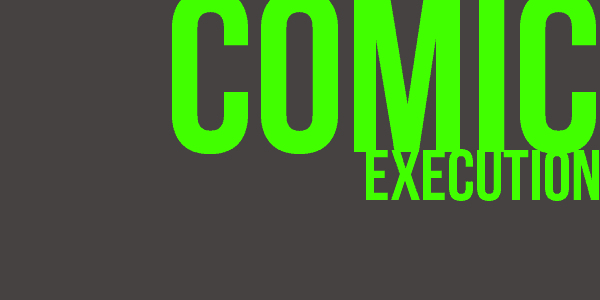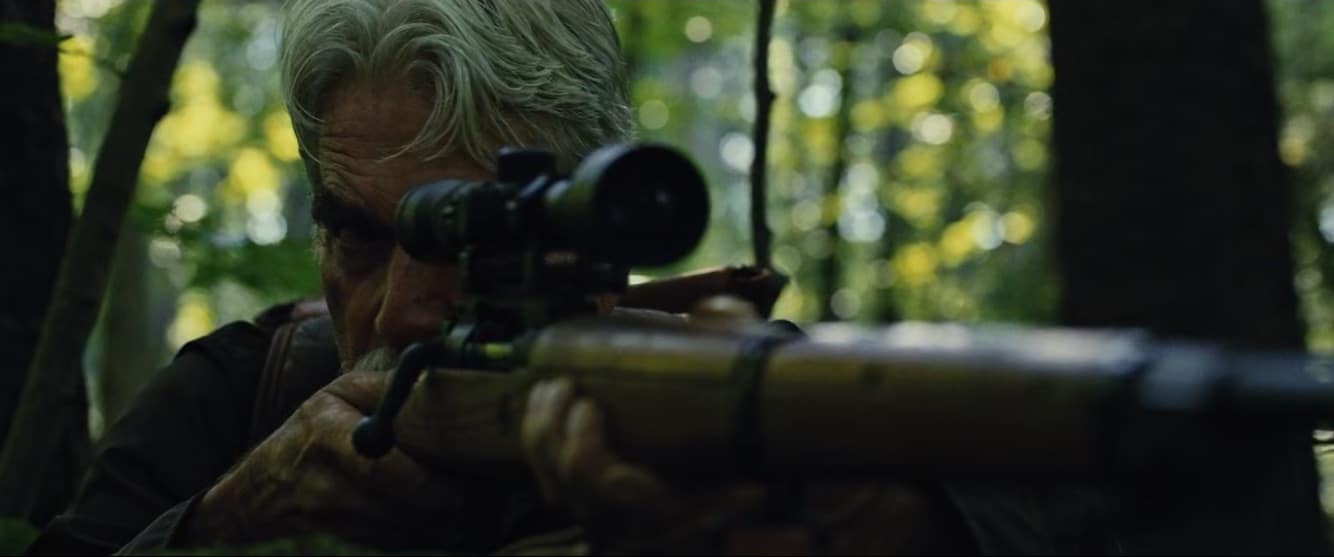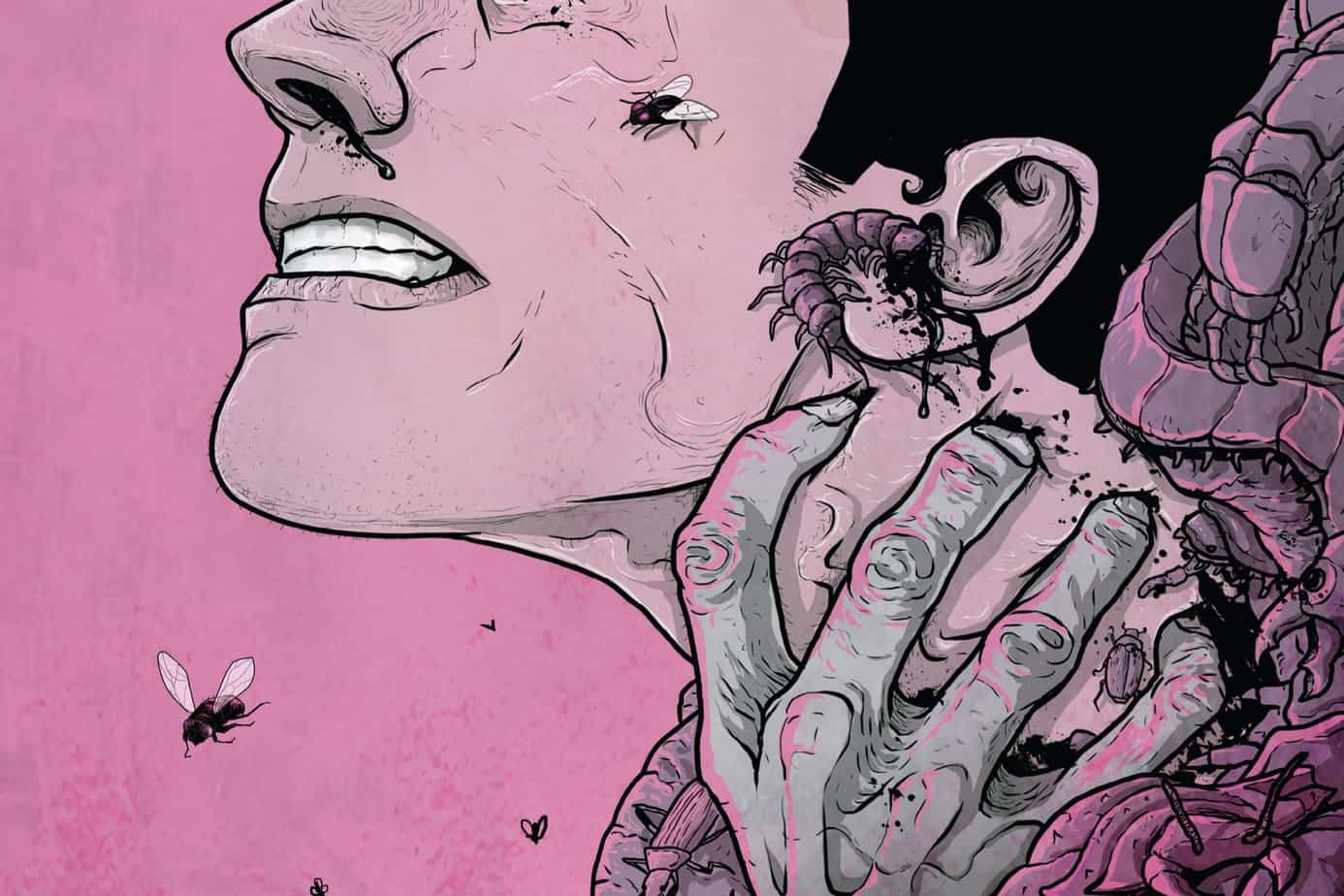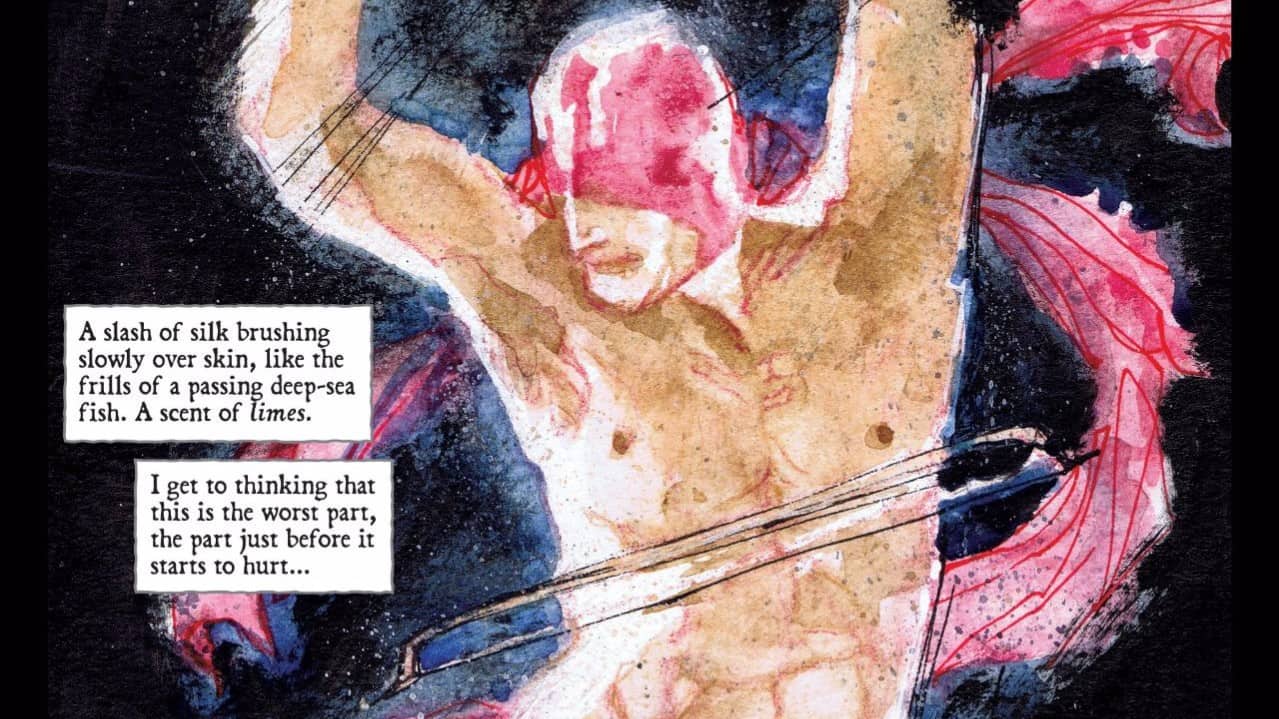
[Comic Execution] 9/12 – PROMETHEUS, ROT & RUIN, ’68
Why, Dark Horse Comics? Why must you insist on being so stubbornly resistant to inevitable shifts in the comic book industry? Let’s talk about how difficult it is to buy a digital book from you. First, instead of opting to sell your books on your own website (like Image) or having them available on the Comixology app (like IDW, BOOM! and Dynamite), you have to have your own app. Then you refuse to have in-app payments, shuffling customers to your website and away from the extra app you’ve just connived onto their devices. FINALLY, your website only accepts credit cards as payment, which in this day and age is absolutely unforgivable. And then you have the gall to make your comics just as expensive as the rest of the industry.
I really hope you’re paying your employees good money.
PROMETHEUS: FIRE & STONE #1
Writer: Paul Tobin
Artist: Juan Ferreyra
Publisher: Dark Horse Comics
Price: $4 (Digital)
I have a lot of mixed feelings about the ALIEN franchise. Any right-minded sci-fi and/or horror fan should deservingly adore the original film, and the second film is an example of making a sequel work where it never should’ve. And I’ll talk blue in the face about how unfairly demonized ALIEN 3 is, a film that is much better than it is spoken of but had the unfortunate chore of living up to an unrealistically glorified legacy. It was right about the time that someone got the absurd idea of combining the PREDATOR and ALIEN franchises that things went downhill. That’s not to say it didn’t work great as a comic; it certainly did, because comics work differently than films. But when someone *ahem* started coming up with explanations regarding why these creatures shared a universe with humans… Why they didn’t work as movies is a different subject entirely and has a lot to do with the same reasons that the PREDATORS movie failed, despite being a winning formula on paper. So as you can guess, I have zero regard for PROMETHEUS, a fully-baked joke that tried to revitalize the ALIEN franchise without understanding for a moment WHY those films worked. How would I feel about a PROMETHEUS comic?
I’ll admit by skepticism was muted a bit when PROMETHEUS: FIRE & STONE was announced, as the creative team had worked together before on the fantastic surreal horror comic COLDER, written by Paul Tobin. Tobin brings a lean, direct approach the proceedings, with the exception of the opening prologue, which provides a very surreal glimpse of the main antagonist of PROMETHEUS before going through a well-executed introduction to the cast, most of whom are part of a survey mission that’s being recorded on video, supposedly to document the trials of deep space travel. Wisely, this obviously rather poor excuse is, in fact, deception, so it’s a forgivable offense. Tobin knows better than to go through the motions with these character developments; we’re immediately alerted to uncertainty by a ship captain hiring someone to film what she claims is a simple, profitable survey mission. I’d call BS right there but this is Weyland-Yutani we’re talking about; if they’re not sticking their noses into places in space where it doesn’t belong, you wouldn’t be calling it a proper ALIEN story.
There’s the boyfriend, invaluable in establishing someone we expect to die as horribly as possible, and thankfully he’s just as obnoxious a character as you could ask for. Things get really interesting with the astrobiologist, who seems to have an ominous “medical condition.” That’s not the most worrisome thing, though, as one of the Synthetics is behaving notably off-kilter. Already a formula for wonderful catastrophe and only five pages in! That being said, the Synthetic’s tic is actually pretty disturbing, to Tobin’s credit. Then, of course, there’s the chief security officer, only slightly more obnoxious than the boyfriend and his similarly bro-tastic crewmate. I guess fist-pounding is still a thing a century from now? Anyway, the dialogue all firmly establishes these characters’ utterly one-dimensional personalities and, predictably, Captain Angela confesses to the camera that she hasn’t been entirely honest with her crew about the mission, as well as summarizing the gist of what the film PROMETHEUS established.
The second half of the story is less annoying, as the crew lands on the alien planet and discovers all the new lifeforms waiting for them. Still, in between their scientific discoveries, everyone’s behaving like the stereotypes we expect; the nerd gets mocked by the security chief, the captain behaves ominously (and no one questions her), etc. Some more minor characters come into play and by this point we’re expected to remember around 12 different names, about half of whom barely have personalities, while the other half are walking talking punchlines. Their discoveries obviously tie into the events of the PROMETHEUS film somehow but anyone who hasn’t seen it will be utterly befuddled. The dark secret of the Astrobiologist gets a bit darker, adding a somewhat justifiable hubris to his presence. In the heart of the alien jungle, they finally find what they’ve been looking for and if you’ve seen ALIENS, it’s a big deal, though the very last scene establishes its significance as well.
Artist Juan Ferreyra has my admiration for successfully bringing to life the world of ALIEN in both lines AND colors. His draftsmanship is absolutely impeccable in every possible mode, from high tech spacecraft to imitating the signature Giger style of the xenomorphs in other lifeforms. His character designs are simple but distinctive and, for the most part, help each character stand out, at least until they’re prancing around in spacesuits. Speaking of which, I think it would’ve been super helpful for each character to have a distinctive spacesuit instead of uniform ones, as it’s hard to figure out in the later scenes who is doing what, unless there’s a close-up. That said, there’s so much really excellent work throughout the comic that the few other flaws I can find are barely mentionable (there’s one panel that’s just text on a black background).
Letterer Nate Piekos must have been deeply involved in the layouts and visual narrative, as his efforts are some of the best work I’ve seen as of late. From page one, we get distinctive and cool-looking text blocks that convey robotic information perfectly, contrasted sharply by a big, garish “KRUNCH” that stunningly conveys the force of the menace on display. When a video camera is turned off later, Nate filles a narrow panel with stark white on black text of a large, drawn out “beep” punctuated by a click. Creative and very appropriate. However, for almost the entire exploration of the alien jungle, there’s no sign of this energy until late in the game, but Nate’s lettering unsettlingly establishes how wrong it feels as the explorers rip apart tendrils of weird plant matter. Rarely do I see a letterer take this much initiative and while I get why he stays silent during the crew’s investigation, it’s a bit of a bummer not to see how he would’ve conveyed the alien animal noises.
As a PROMETHEUS comic book, all I can say is that this comic exceeds my expectations by having some truly incredible artwork that easily surpasses the CG orgy that was the film. But Paul Tobin is clearly content here to write what is essentially a remake of PROMETHEUS, with just as many unsympathetic characters and obvious plot contrivances as expected. Tobin might be laying down some interesting mysteries but the feeling I get is that he’s already been doomed to recycle the film’s narrative arc and isn’t trying too hard to break that mold, which is disappointing as all hell, because if he was, this could be an incredible comic. Still, I’ll give the second issue a chance because if Tobin CAN pull this thing out of the fire, I want to be there for it.
’68: HOMEFRONT #1
Writer: Mark Kidwell
Artist: Kyle Charles
Colorist: Jay Fotos
Publisher: Image Comics
Price: $4 (Digital)
I reviewed one of the ‘68 miniseries a while back called RULE OF WAR, set in and around Vietnam during the war, featuring zombies, and panned it for lackluster writing. Well, it’s five months later and ‘68 has a new miniseries called HOMEFRONT. As soon as I read the summary, I figured I’d give it a shot, as it relocates the story from war-torn Vietnam to small town Midwestern USA in the late sixties as well as features a new artist.
Writer/creator Mark Kidwell is still in charge and it looks like, from page one, he’s up to his usual shenanigans. We open with three high school seniors, all cheerleaders, joyriding and getting high. At first, it seems like Kidwell might have developed a sudden desire for characters with real personalities but then the three girls devolve into talking about (what else) men. Now, I get that it’s small-town Midwestern USA in the sixties so maybe there isn’t that much to do or talk about but unless Kidwell is trying to portray these girls as shallow and bored, he could try not to give us the impression that he thinks all women’s lives revolves around men. They bicker about who’s a slut and who’s not until the scene changes to a mortuary where the dead have changed their minds. The mortician, barely escaping their grasp, unwisely chooses to get a drink rather than, you know, RUN FARTHER AWAY, while his rather stupid wife fails to pick up on how utterly terrified he is.
Meanwhile, the girls provide us a tearful segue into a bus crash where the football team has scored their last touchdown. A cop on the scene conveniently figures out to DESTROY THE BRAIN and relays this info to dispatch. From this point on, the story is mostly a bunch of poorly written dramatic bullshit revolving around the homecoming queen revealing that she’s going steady with a switchblade-wielding greaser, then we find out that *gasp* she’s pregnant but *gasp* he’s enlisting! I hate you, Mark Kidwell. Things at the morgue go from bad to very very bad and the whole thing ends with zombies descending on the pep rally.
Artist Kyle Charles delivers admirably against this utterly dim tale, with expressive and bold yet detailed and finely-tuned lines. His style evokes classic EC horror but has way more going on in each panel, with a sense of mood and atmosphere firmly established by colorist Jay Fotos. There’s a fantastic panel featuring the well-worn horror cliche of a reflection in a doorknob to build suspense, but Charles and Fotos absolutely nail it, which is very impressive in a comic. There’s another great panel almost right after where the POV is inside a bottle of liquor being poured into a glass and it feels like they must’ve studied a model for it to get it down so well. Their execution of gore is also top-notch. Letterer Tom B Long matches the art with over the top, blunt force sound effects, again recalling classic horror comic style, using gradients to amp up the brutality where needed.
It’s such a shame about this comic because I’ll be damned if I don’t absolutely love the art to death. It’s just so good. It’s a shame it’s there to convey a shitty script written by an absolute turd. Mark Kidwell’s problem is that he thinks that by writing all his characters as cliches, he’s somehow accurately depicting the past, but that’s not how it works. If you want me to be interested in your story, you’ve got to give me characters I’m not annoyed by, regardless of whether their behavior is true to life. You’re writing a zombie horror, for crying out loud! Realism for its own sake does not have a place in this genre. And since I know Kidwell’s just going to keep this lame train right on the tracks, I’m executing this comic here. I’d destroy its brains but it never had any to begin with.
 ROT & RUIN #1
ROT & RUIN #1
Writer: Jonathan Maberry
Artist: Tony Vargas
Colorist: Oliver Lee Arce
Publisher: IDW Publishing
Price: $4 (Digital)
I have no idea what ROT & RUIN is. I mean, I *know* because the Comixology summary says that it’s an adaptation of a popular YA zombie horror novel, but I don’t “get” it. The description of the novel reads like a mash-up of WWZ and THE HUNGER GAMES, which is unappetizing to say the least. The comic is written by the author of the novel so what we’re getting is the distilled essence of that tale.
First off, let me just say how weird it is that Maberry uses decades-old song titles from the Rolling Stones as titles for his chapters. Either he’s hoping parents who investigate the book for their kids will be impressed or he’s trying to get a younger generation to discover the Rolling Stones, and I’m not sure which one of those is tackier. This isn’t helped by the fact that the reader is immediately bombarded by narration from the protagonist Benny as he helpfully explains everything that’s led up to the current moment in his life. There’s his father’s zombification and his mother’s brave sacrifice, the zombie apocalypse equivalent of car crash orphaning. Thankfully, big brother is a born survivalist and a badass with a katana so no big deal. But oops, abandoning mom earned the ire of naive young Benny and now that it’s too late, Benny still harbors regret about that. It’s pretty much his only character flaw, since he’s apparently incredible at everything else, just like his brother.
The setting is so reminiscent of THE WALKING DEAD, at least so far, that it’s hard not to wonder if this didn’t start off as fanfiction. The plot revolves around the hero and his friends trying to track down an airplane they’d spotted passing overhead, which is a clever catalyst for the story but so little of the comic actually deals with that. In fact, the only event in this issue that isn’t a flashback is a zombie attack, though the “twist” at the end could qualify if it wasn’t so maudlin and a blatant cliffhanger. Instead, we get oodles of character development, except its written by an old guy, so these teens behave like adults, which is kind of creepy, honestly. Is that part of the appeal of these types of books? Is there a whole generation of YA readers who are growing up this quickly? It really makes me feel like an old man, and not in a cool way. Especially that ending. What kind of teenager sees something like that and is anything but turned off?
The art is mediocre, simply put. The artist has an obvious manga influence but not in a stylized, classical way. More in that Humberto Ramos way that reeks of shortcuts and laziness. I mean, at first glance, the clean lines look good and the heavy exaggerations make the action pop (the gore is frighteningly detailed for a comic aimed at the 12-18 market). But you can’t fail to notice, after the first 10 pages, how naggingly unrealistic the art is. I mean, yeah, if you’re a beginning comic reader, you’d just be really impressed, but to anyone with a modicum of art awareness, the proportions and expressions are obnoxiously perfect. It’s especially disturbing how well-endowed the artist draws the teen girls. There’s a gag earlier that involves a Wonder Bra that’s also pretty creepy. Colors by Oliver Lee Arce are great… but wildly inappropriate for a horror comic. Everything has a clean, bright look that creates a pretty brutal cognitive dissonance with such grim contents.
My dislike of this book has everything to do with me being an old man. I don’t care for how exaggerated and perfect the main characters are but when you’re a teenager, you’re reading for wish fulfillment, not realism. But I do feel like this is at odds with a genre that’s not supposed to be about wish fulfillment. At the same time, this is a THING now and frankly, it’s a head-scratcher. Back in my day, wish fulfillment came in the form of wild, imaginative stuff like ANIMORPHS or even HARRY POTTER. This whole “teen drama + apocalypse porn” trend scares me and this ROT & RUIN comic book series epitomizes the worst of it. If only I had sweet samurai warrior skills like the main character so I could execute this comic with poetic justice. Instead, we’ll make do with a headshot to destroy the brain.



